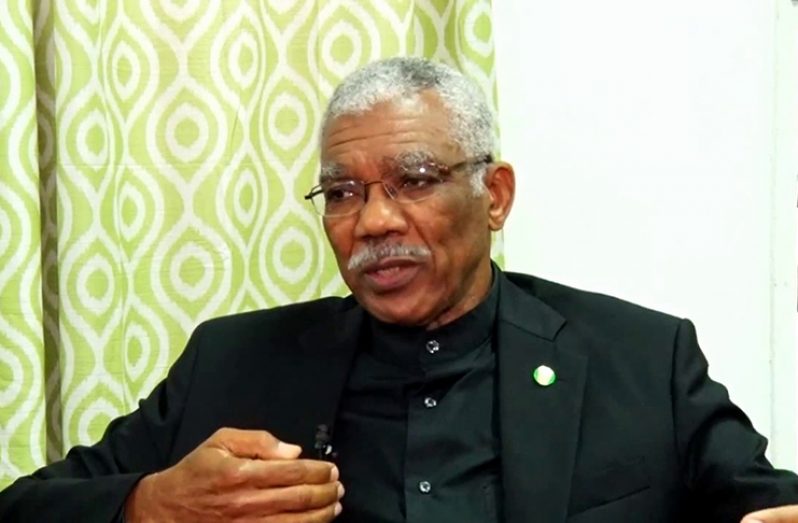…PNCR urges citizens to come forward with evidence on phantom killings
…assures that state would provide protection for witnesses
THE People’s National Congress Reform (PNCR), while concerned about the fear of persons in coming forward with evidence which could take down major criminals, has assured citizens that they will be protected if they so do.
The National Assembly, in January last year, passed the Witness Protection Bill which provides a legal framework for the protection of witnesses. The bill, which was piloted by Attorney General (AG) Basil Williams SC, makes provisions for the establishment of the Witness Protection Programme and three organisations – an Administrative Centre, an Investigative Agency and a Protection Agency, to administer it. The aim of the programme is to focus on the safety and security of participants, including the provision of payments to them for living expenses, relocation of them and their families and the establishment of a new identity.

During the debate on the Bill, Williams had told the House that it would be “instrumental in the government’s anti-corruption stance and fight against crime”
He said the APNU+AFC Government is committed to eradicating corruption and he said credible testimonies are critical to investigate and prosecute criminals and any public official who squander national resources for personal gain. “Providing witnesses with proper and adequate protection will play a crucial role in bringing the guilty to justice,” he stressed. “The value of evidence provided by whistleblowers, victims and witnesses about criminal or corrupt activity cannot be overstated. They perform a sacred duty of assisting the court in discovering the truth and are cornerstones of our justice system,” he added.
Last Friday at the PNCR weekly news conference, Executive Member, (ret’d) Rear Admiral Gary Best, agreed with the recent remarks of President David Granger that the absence of forthcoming evidence on Guyana’s period of “The Troubles” has hindered the prosecution of those responsible. “It’s a moral issue: persons who may have information and feel afraid to come forward,” Best, a former Chief of Staff of the Guyana Defence Force said.
“In these circumstances, the party’s position is that we encourage persons to come forward and if they do we do have anticipation to provide as much protection as is needed for persons who wish to come forward and give evidence…it is a concern of the PNCR, [and] from the point of the government, that the state apparatus is that many persons seem to be escaping the law.”
The period in Guyana from August 11, 1999 to December 3, 2011 has been dubbed the
“Troubles” by President Granger, who has noted that it was a time characterised by drug-driven chaos and bloodshed under the Bharrat Jagdeo administration. Back in 2003 to 2006, convicted drug-trafficker, Shaheed Roger Khan, had set up a criminal network here. The network included active policemen and a number of former ranks, ostensibly to go after criminals but at the same time protecting his ‘narco’-trafficking interests.
He was nabbed in neighbouring Suriname in 2006 and returned to Guyana in September after serving just about 10 years in a US detention facility. He was previously held by the Police Force (GPF) for the murder of political activist Ronald Waddell and Boxing Coach, Donald Allison, but has not yet been charged with any offence.
Best told the media that ridding Guyana of these criminals, guilty of countless extra-judicial killings, must be a collective effort between citizens and the government.
However, he pointed out that much of the evidence which the PNCR had expected would remain in the State’s possession even in the case of a change of government, were not present when the coalition took office in 2015.
He said that the GPF had some nine years of investigation-based findings on Khan before the coalition came into power, but there is no knowledge about what happened to this information.
“The party in opposition [then PNCR] would have had primarily anecdotal evidence. The party in opposition didn’t have the government apparatus to do investigations,” he explained.
“We would have received information from some businesses who came forward stating things that occurred which they would have witnessed. But, in a State, we expect the apparatus to remain intact. So, what the party expected is that when it came in to government it would find whatever evidence was gathered by the State and the State institutions.” From 1999 to 2011, there were three massacres: Lusignan where 11 people were killed, Bartica where another 12 were killed and Lindo Creek where seven miners were slaughtered. Besides these, there were countless extra-judicial killings – with some activists estimating that around 400 Afro Guyanese males were gunned down.
President Granger had stated that it is only through the acquisition of evidence that persons involved can be charged.
Last Wednesday, President Granger told reporters that while government has made efforts to bring to justice the culprits behind the massacres of innocent Guyanese during the crime wave, the methodical killing of those with evidence continues to hinder conviction.
President Granger said too that he is disappointed that, even now, persons are being executed for the knowledge they hold. This, in turn, continues to hinder the work of law enforcement in bringing peace to the many who lost relatives during the period characterised by drug-driven chaos and bloodshed under the Bharrat Jagdeo administration. “This is a major factor that there might be people out there who are unwilling to speak because it might be felt that persons who disclose evidence which could incriminate the actual culprits might themselves be eliminated,” the President said.
He added, “we did make a start by having a Commission of Inquiry into the Lindo Creek Massacre and even now the relatives of the persons who were killed would like to see some follow up and we are discussing with them the recommendations of the Lindo Creek Massacre. But, it pointed to the fact that there has not been any smoking gun; that evidence has not been sufficient to bring anybody to justice and that many of the possible witnesses have been killed or eliminated.”
Speaking again to the Lindo Creek massacre in which efforts were made to put answers to the many unknowns of the “Troubles”, the President said that while the will to convict is there, much of the evidence is still lacking. “We would like to bring these matters to a closure and to the relatives of the persons who were killed. Lindo Creek was a good lesson to us that we may spend millions of dollars, we may interview persons but those persons who are culprits and those persons who might have been implicated or might even have knowledge about what took place have not come forward and given us the type of evidence on which we can go to court and make convictions,” he stated.
“It’s very disappointing for me but that is part of the reality of what happened during the “Troubles” when people were easily eliminated and, even now, people are being executed and it’s difficult for the police to find motivation behind such executions. One of the most outstanding and the most notorious is the execution of Crum Ewing. So, it’s an ongoing task of the law enforcement agencies. I am convinced that the police force would like to move ahead further and faster but a lot of people have been killed and dead men tell no tales.”




.png)









